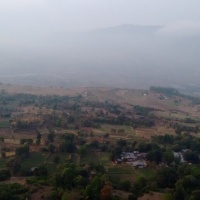
The trees have withered, the stream has run dry and the birds do not chirp anymore. When it is time for spring there is a deathly silence. This is how Rachel Carson introduces us to our world in her book, one where pollutants reign supreme and nature chokes to death.
Carson in the first chapter of the book itself brings us face to face with the magnitude of the problem we are facing and what the repercussions could be. The language is straight and simple. The result is equally impactful.
Silent Spring was written by Carson when she was fighting Cancer in the early 1960’s. Published in 1962 in America the book got instant public recognition yet detractors came down heavily on it. Two things went against it- First was that it was written by a woman and thus 50 years back that meant that its credibility was doubtful. Second and a much more important factor was that Carson had dared to take on pharmaceutical companies head on in her book.
She did not mince her words. She did not have to as all her statements are backed by data that is in the public domain and the environmental changes had certainly not escaped notice. Silent Spring puts the facts in a clear and crisp language which makes it all the more appealing to the reader.
By the time you reach the end of the book you process the acute seriousness of the situation and realize just how much our planet has been damaged. Then reality hits you and you wake up to the fact that Carson wrote Silent Spring in the 60’s. Half a century has passed and things have deteriorated further.
She does not preach rather she presents case study. All the case studies are from America but they apply just as well to any other country. She cites incidents like the anti malarial spraying in Java by the World Health Organisation that led to the large-scale killing of the cats as the composition of the spray was not suited to animals.
Carson blames the environmental damage squarely on governmental agencies and pharmaceutical companies that manipulate information to build public opinion in favour of their products. Though she does not say it that way but in essence it is profit-making at the risk of long-term irreversible ecological damage. Carson reiterates repeatedly that the masses are generally not aware of what kind of toxins are released in the atmosphere in the name of pesticides and fertilizers, as according to her, if they knew the absolute truth they would be up in arms against these chemicals as well.
In spite of being an expert herself she repeatedly quotes statements made by well-known researchers and heads of research institutes- all of them men. She distances her writing from herself and portrays the book as a compilation of information that was well-known but was just not linked together. She also detests form using any scientific term rather preferring to stick to simplified explanations of most of the issues.
An important consequence of the popularity of the book was that DDT was banned across United States of America. However the book does not revolve around DDT. Silent Spring takes a holistic view of nature and links small incidents with the overall picture well. The reader gets a sense of the extensive damage on the global scale that all the minor changes are leading to something that can be credited to Carson’s lucid writing style.
Silent Spring does not just point out the problems but gives solutions too. In each chapter as Carson criticizes the prevalent methods she also points out to alternatives that were looked over. She cites the example of how Klamath weed was controlled in the United States of America by simply importing a plant-eating moth after millions of dollars were spent in trying to weed it out at first.
Though she feels deeply for the environment and that comes through in Silent Spring, her writing is not cynical while her criticisms are constructive. She does not always paint the authorities as evil but at times merely as people who have severely mismanaged situations.
For a book on science it is extremely well written keeping mainstream audiences in mind. The fact that Silent Spring was her fourth book explains why the writing is so polished.



